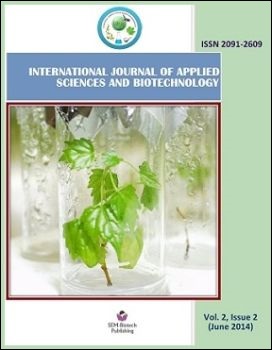Qualitative and Quantitative Analysis of Fish Tissue of Oreochromis Mossambicus Collected from Kedilam River, Cuddalore, Tamilnadu, India
DOI:
https://doi.org/10.3126/ijasbt.v2i2.10141Keywords:
Fish, Histopathology, Industrial Pollution, Kedilam River.Abstract
Qualitative and quantitative histological alteration was taken to analyze in fish Oreochromis mossambicus collected from Kedilam River at three stations, which receive mostly industrial effluent and municipal runoff. Histoarchitecture of tissue alteration and percentage of prevalence was used as protocol for analysis. Results showed that number of histological alteration observed in gill like structural alteration of epithelium, epithelial lifting, fusion of secondary lamellae and hyperplasia. In liver blood congestion, regressive changes like degeneration of hepatocytes, vacuolation, and necrosis observed where as in kidney it shows glomerular congestion, tubular degeneration, progressive changes like hypertrophied epithelial cells, haemorrhage in bowman’s space. Among the three stations severe histological alteration and percentage prevalence was observed in order of station 1> station 2 >station 3. Highest histological alteration and percentage of prevalence in three organs of fish o. mossambicus are kidney >gill >liver. The major reason for this histological alteration and contamination of fish is mostly due to industrial effluent. Repeated and continuous monitoring is must needed to protect the aquatic organism.
DOI: http://dx.doi.org/10.3126/ijasbt.v2i2.10141
Int J Appl Sci Biotechnol, Vol. 2(2): 135-141




